SPRINGTIME ON THE MEDOW JUST OUTSIDE THE TOWN
In this post, you'll see a bunch of insects and a couple of spiders photographed in the May of 2019. Back then, from 2017 to 2019, I had only a small, old, and pretty bad compact camera, so the photographs lack the sharpness and details of the more recent ones. But no matter the quality of the equipment, there is always something interesting going on in nature, and these grainy, old shots taken on the meadow just outside my hometown document some of that cool stuff.
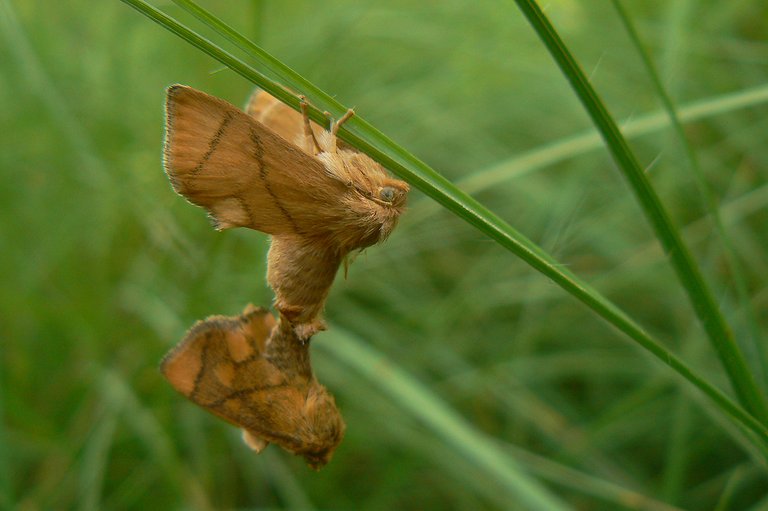
In this opening shot, you can see two moths that look like fallen leaves that hang from a blade of fresh green grass.
Their color doesn't match the surroundings, so they are clearly visible. But their shape and stillness make them look like one of the many dried-out fragments fallen from the trees on the edge of the meadow.
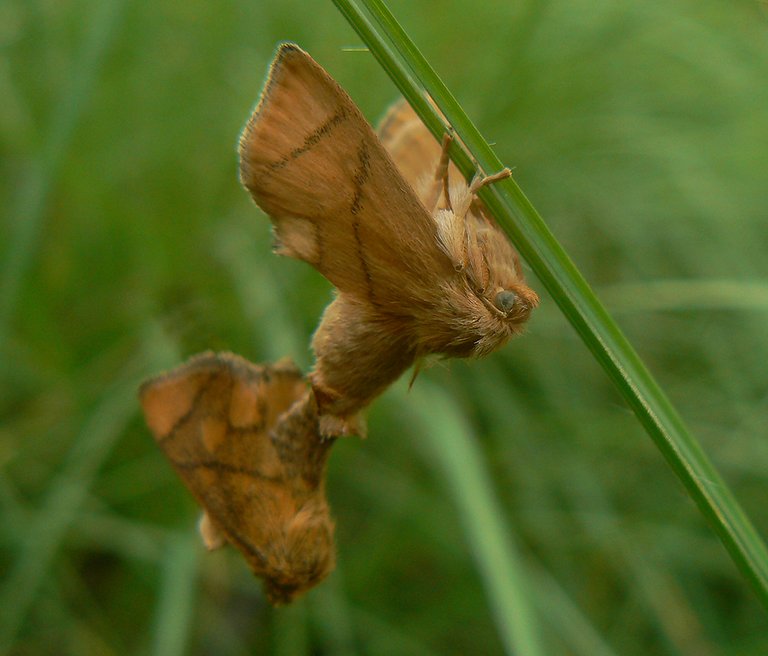
This is a mating pair of Apoda limacodes moths from the Limacodidae family.
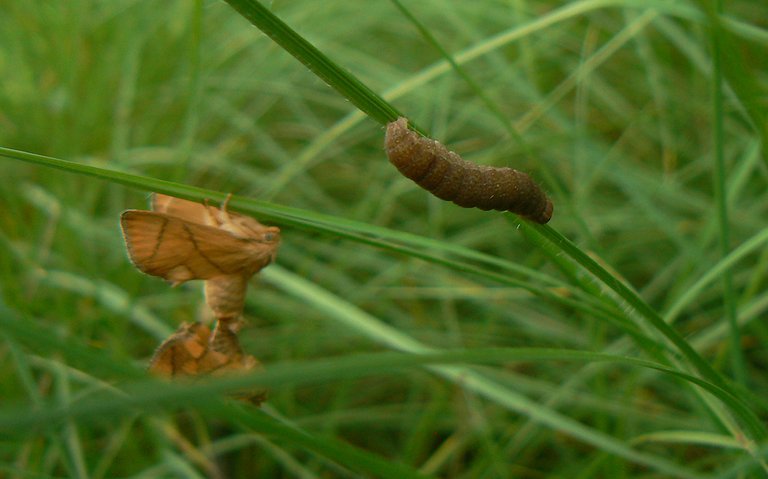
Soon I noticed a caterpillar not far from them.
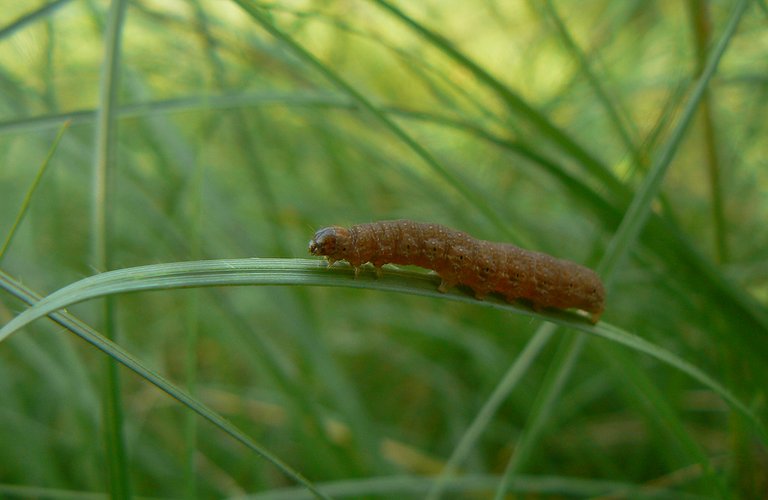
The only thing that I can confidently say about this larva is that it has nothing to do with the aforementioned moth.
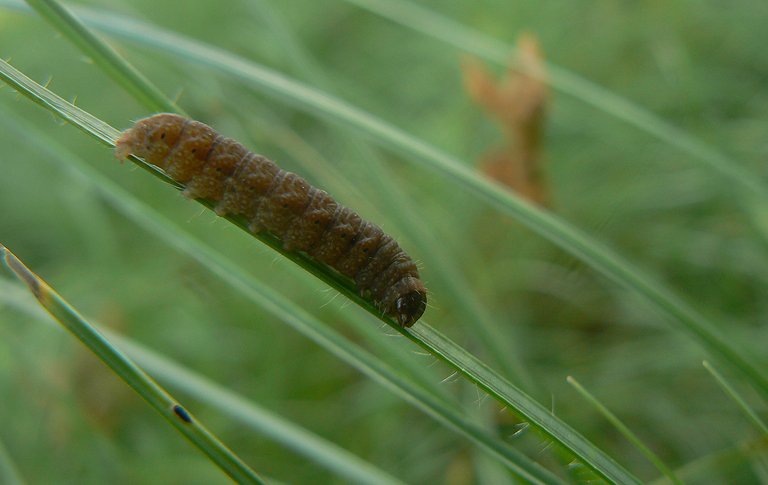
This is probably a moth larva. But of some very different species.

Apoda limacodes is primarily a nocturnal species, but occasionally, these moths can be active during the day as well.
After some more walking and sniffing around, I came across another mating pair that resembles fallen leaves. These are the Maniola jurtina butterflies.
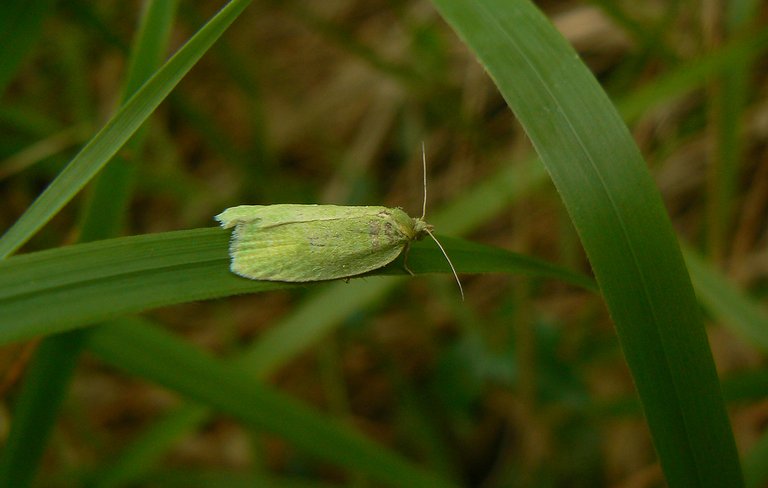
Some moths that I found on that occasion were camouflaged in a very different way.
Their green wings made them hard to notice in the grass.
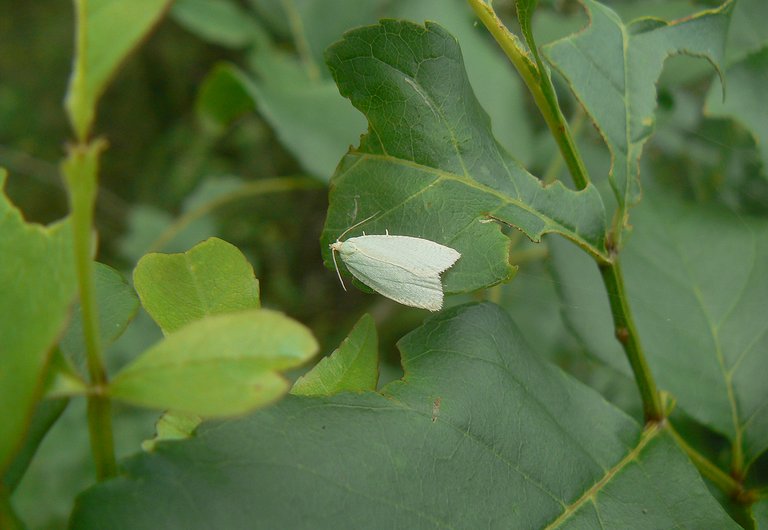
This is the Tortrix viridana ...
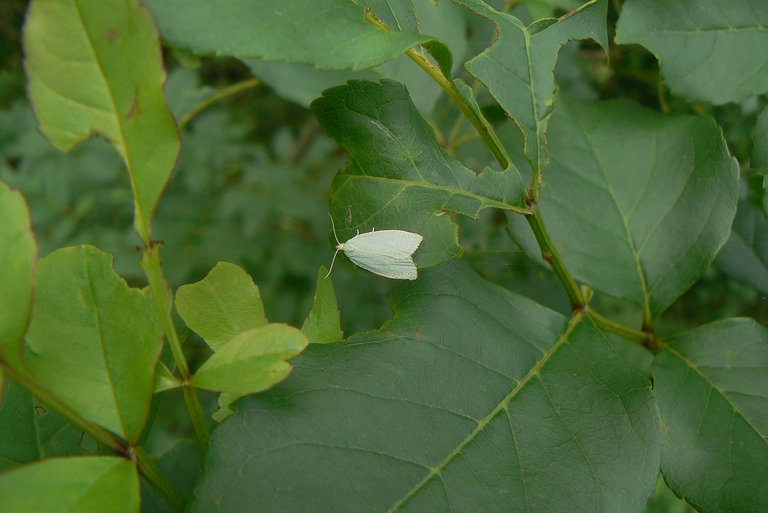
... commonly known as the Green oak moth.
In this triptych, the Philodromus dispar, a spider from the Philodromidae family, has caught a small fly.
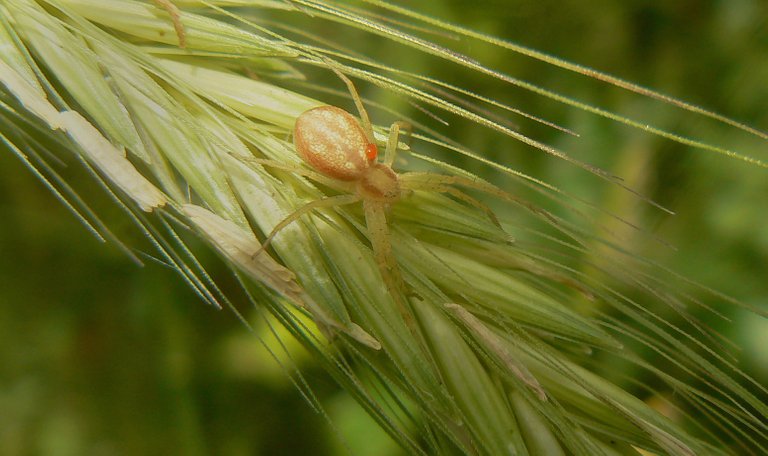
Here you can see a considerably smaller spider from the same family. I'm not sure about the species in this case but is quite possible that this is just a juvenile Philodromus dispar.
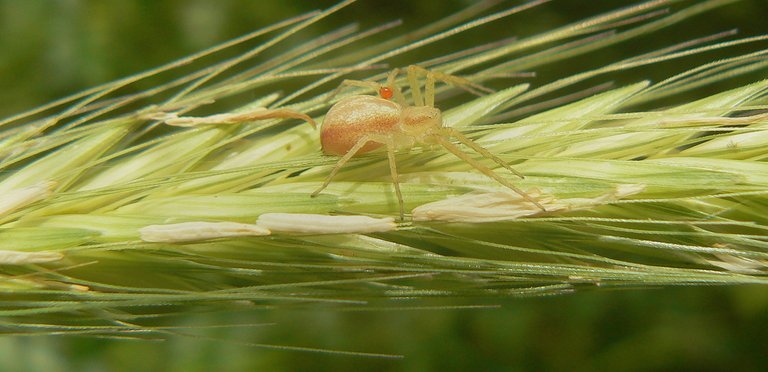
The spider had a minuscule red parasite on one of its legs. This is probably the immature stage of a mite from the Erythraeidae family. The larvae of these mites live as parasites on various insects and arachnids, while the adults wander around as minuscule carnivores able to actively hunt.
At first sight, the small Lacehopper in these three photographs looked like some colorful species that I have never seen before.
It took me time to realize that the vivid red color was there because of the parasitic mites. Tachycixius pilosus is the name of this Lacehopper species.
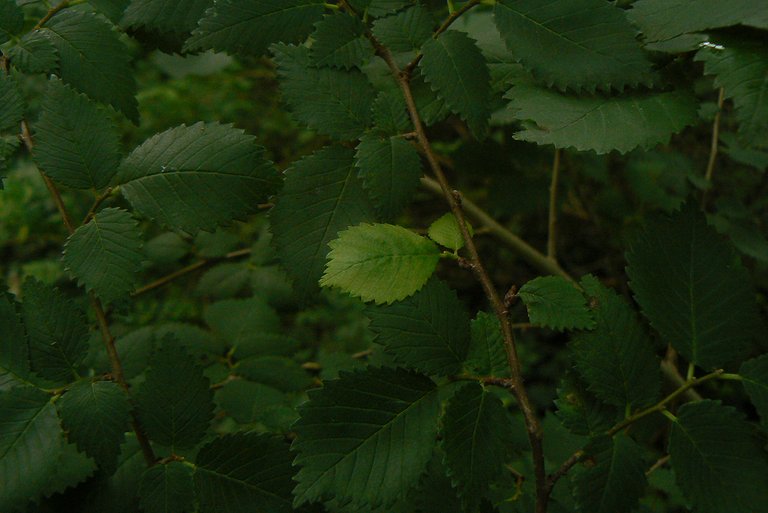
Here you can take a look at the leaves of the elm trees at the edge of the meadow.
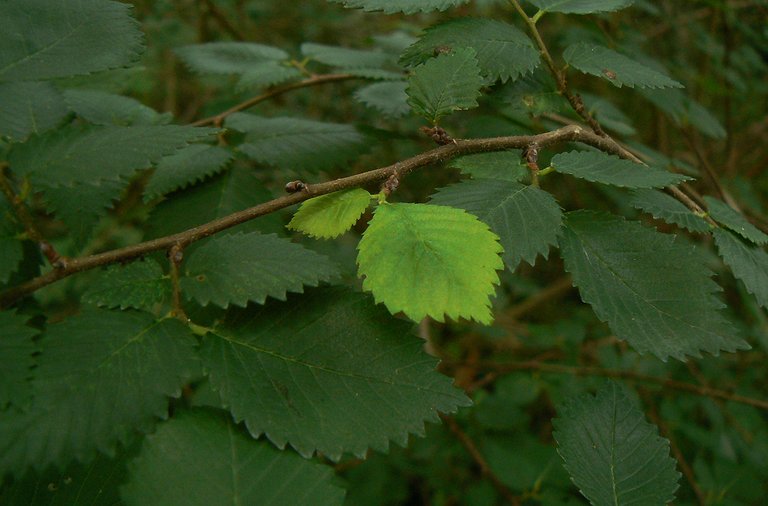
Here you can take a slightly better, more up-close look at the same thing.
In this photograph, you can see a hairy caterpillar among those leaves. This is the larva of the Lymantria dispar moth.
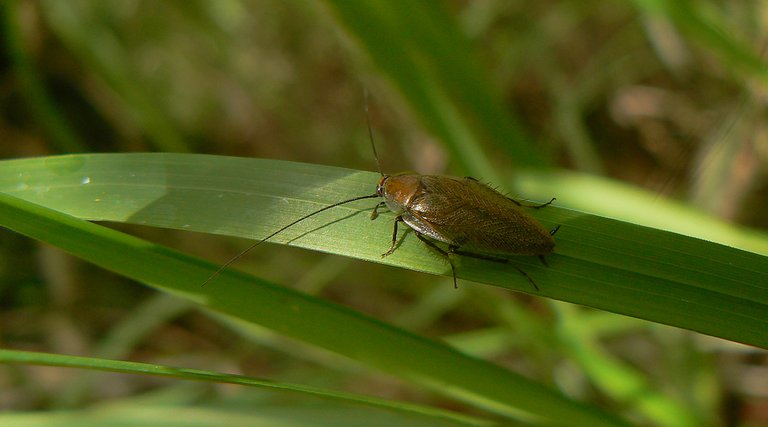
This is one of the many small cockroaches that were running up and down the leaves of grass.

In this photograph, the cockroach is cleaning its antennae.

Ectobius vittiventris is the name of this species from the Ectobiidae family.
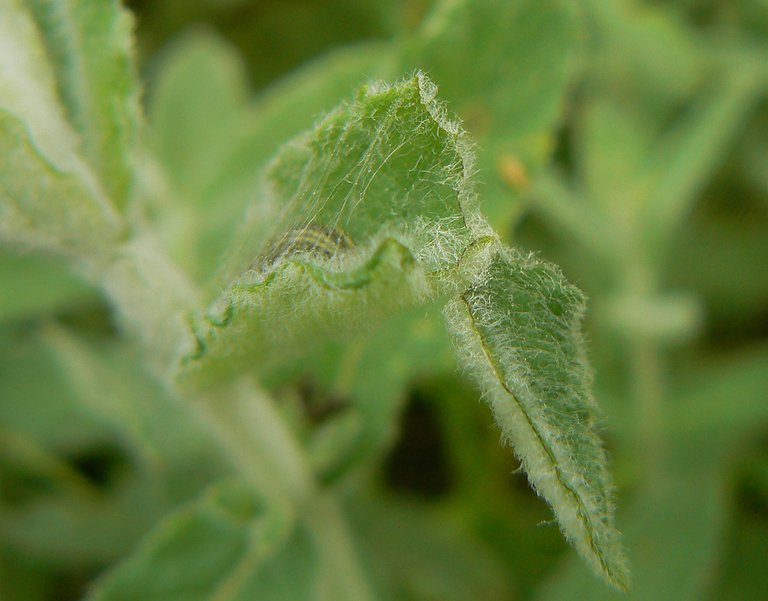
Here you can see a partially eaten leaf of some hairy plant.
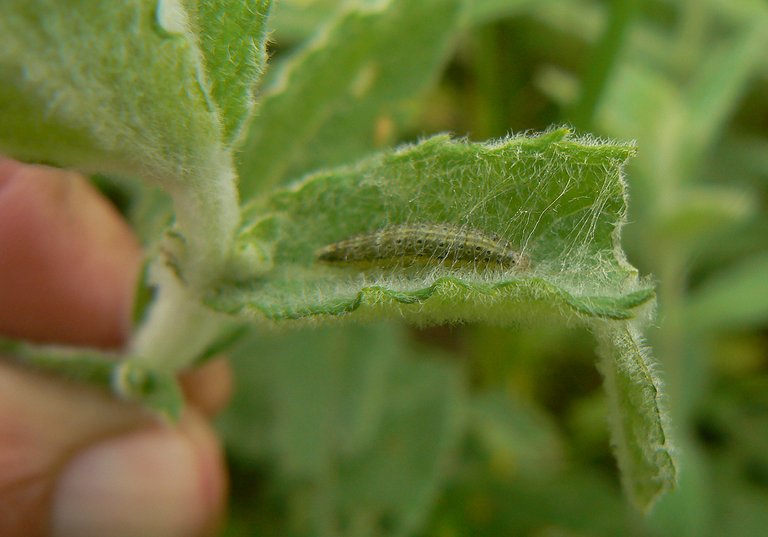
From a slightly different angle, you can see a caterpillar on that leaf.
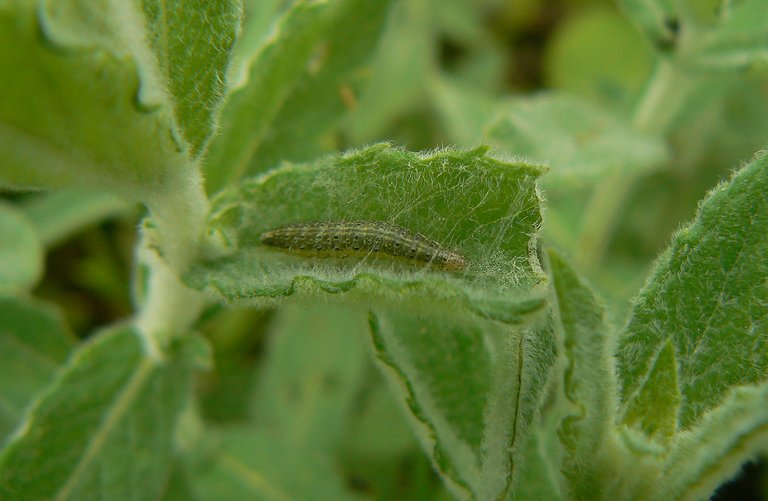
The larva has built a loose silky shelter. This is the caterpillar of some moth from the Choreutidae family, but I can't tell you the exact species.

This bug from the Miridae family, the Megaloceroea recticornis, was photographed on the same plant. You can see the caterpillar blurred in the background.

Here you can see Oedemera flavipes beetle feeding on nectar inside the bindweed flower.
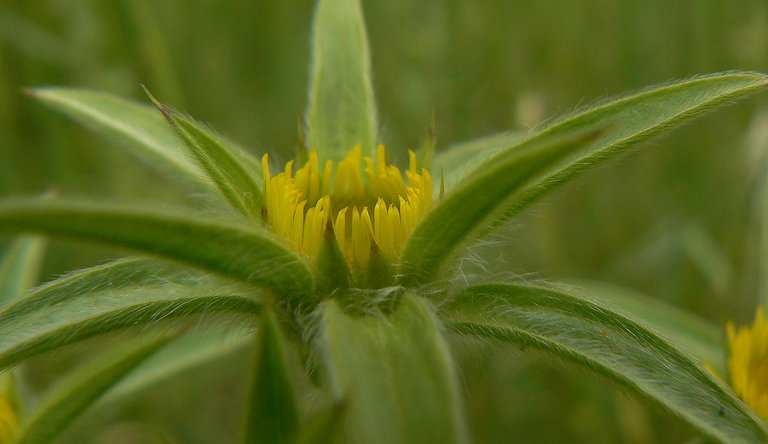
This is the flower of the Pallenis spinosa plant.
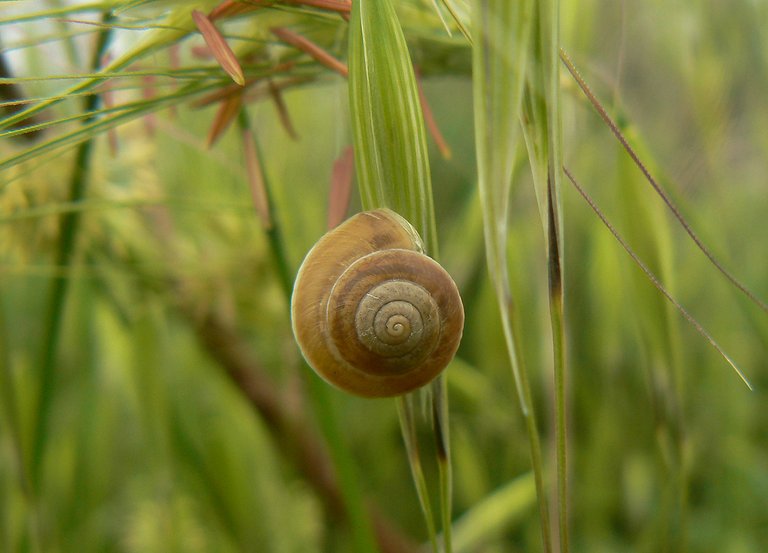
Here you can see a small snail ...
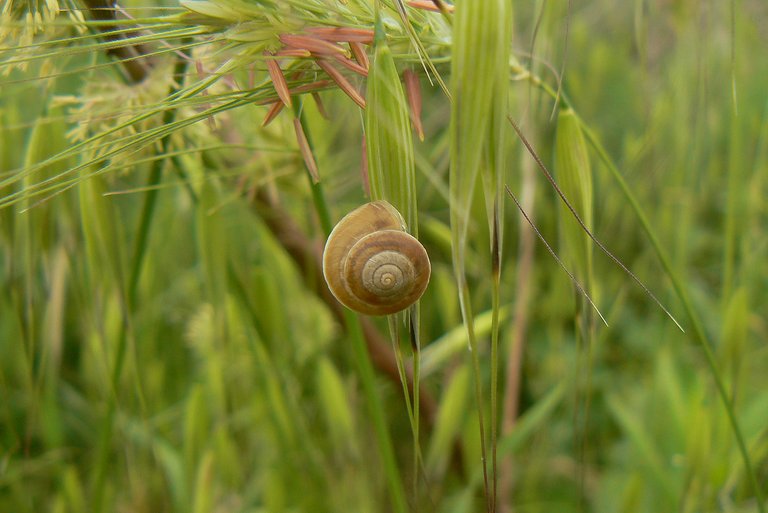
... hanging on the Avena fatua grass.
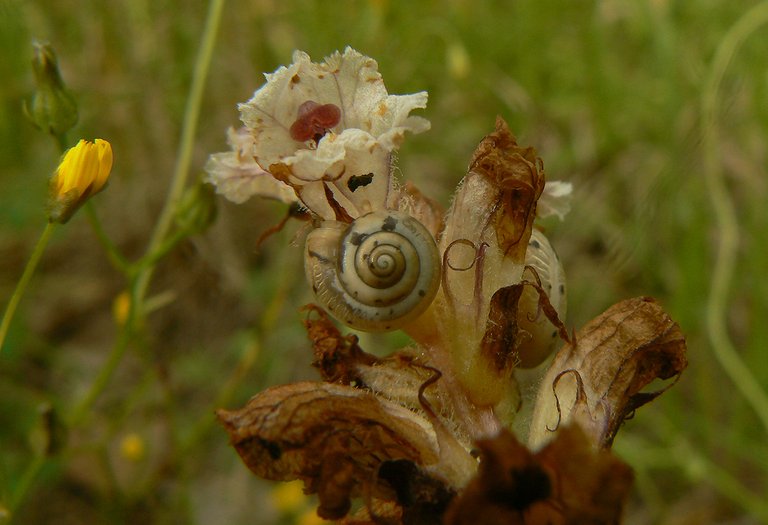
I found another similar snail on the strange flowers ...
... of the Orobanche picridis broomrape.
This pretty peculiar plant doesn't have chlorophyll and lives as a parasite attached to the roots of various green herbaceous plants that grow in the meadow.
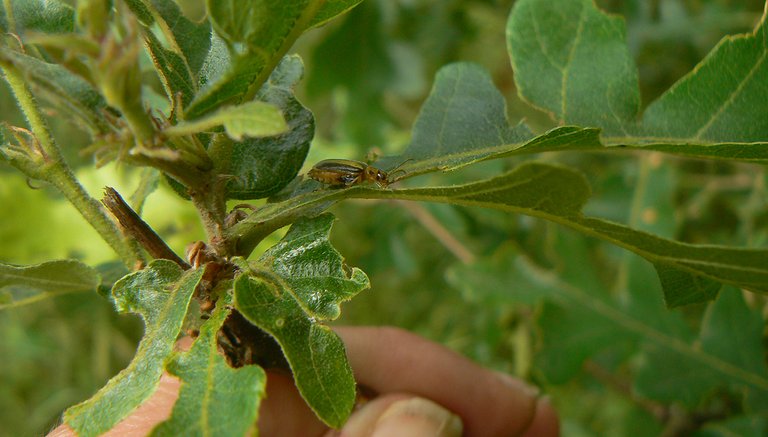
In the center of this shot, above my fingers, you can see a small leaf beetle on the leaf of the small oak tree that looked more like a shrub.
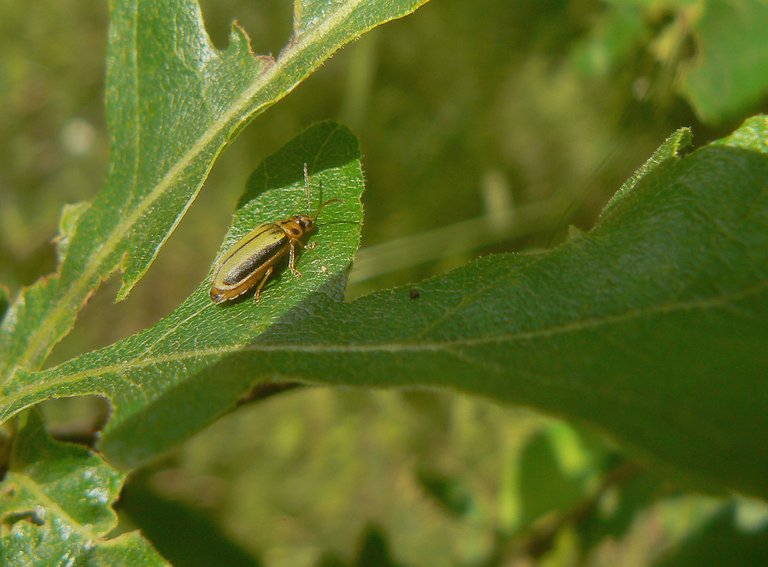
This is the Xanthogaleruca luteola, commonly known as the Elm-leaf beetle. It was photographed on the oak, but this species feeds and reproduces exclusively on the elm trees. The beetle in the following photograph ...
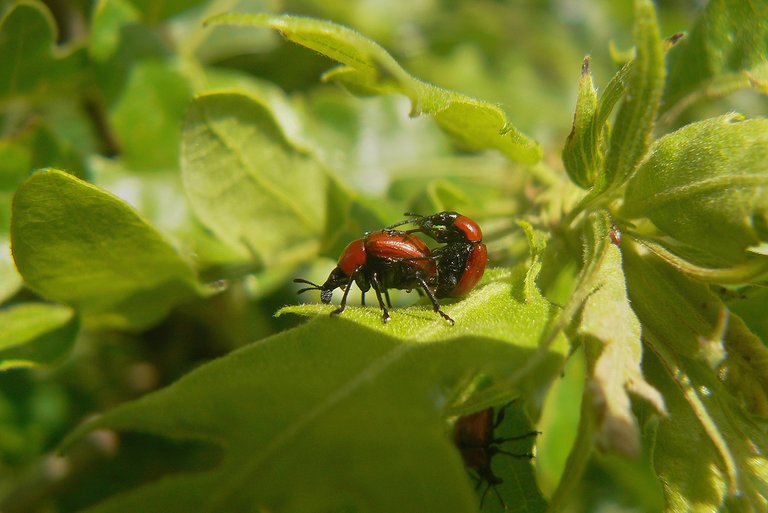
... is tightly connected with the oaks. This is the Attelabus nitens. Here you can see a mating pair of these leaf-rolling weevils.
AND THAT'S IT. HOPE YOU ENJOYED THESE OLD SHOTS. AS ALWAYS IN THESE POSTS ON HIVE, THE PHOTOGRAPHS ARE MY WORK.

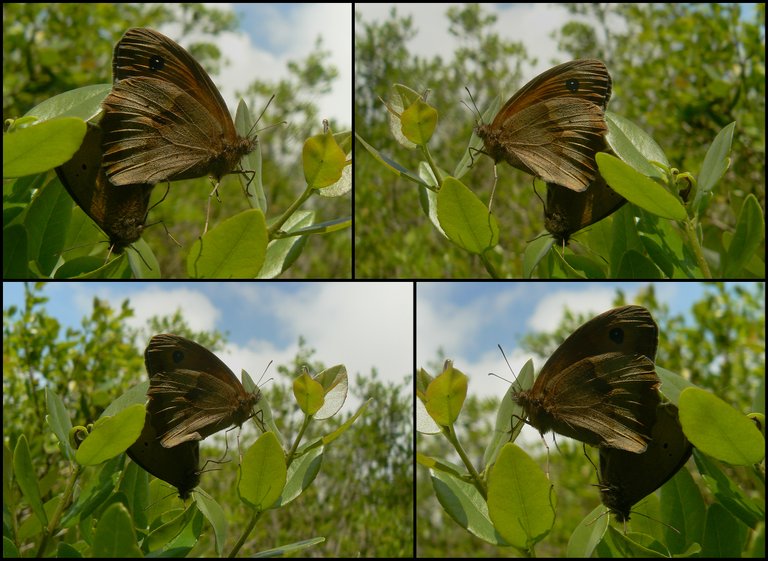





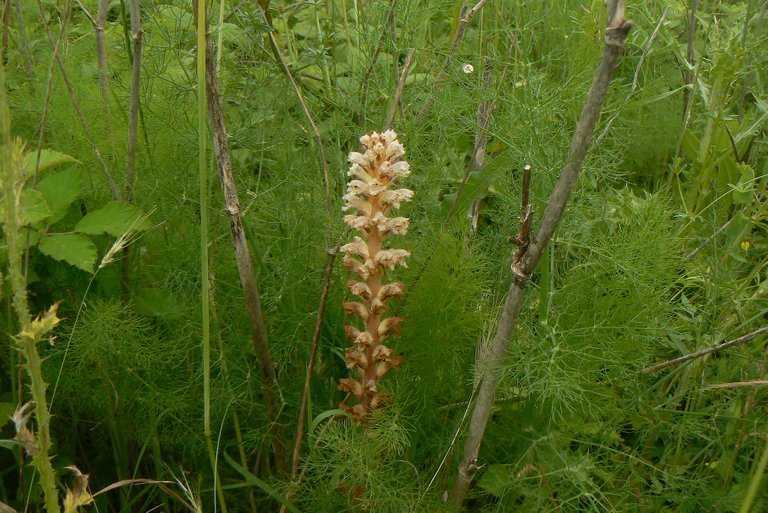

@tipu curate 🥀
Upvoted 👌 (Mana: 35/55) Liquid rewards.
Moments like this, the springtime.
The butterfly really looks beautiful.
The insects shot is so clean.
This is a nice shot @borjan.
I just saw a moth like the picture above, is it dangerous when it comes into contact with hands?
These, in the photographs, aren't dangerous. I think the others are also ok to handle.
insect shot perfectly. I like the insects you shoot, even if you say it's an old camera, but I enjoy great results.
Thanks, glad you like the post.
Great Post..
Always cool observing your post
Thank you 🙂
Beautiful pictures of butterfly and snail
aren't you afraid of a locust moth bite or it's not dangerous?
In spring, there are many types of insects among plants
very good insect photography i really like seeing your photography thanks for sharing
Such a variety of insects… beautiful captures @borjan 😊
Thanks 🙂 now that the spring is here again and the insects are active, I'm more active too. The winter hibernation is over.
Yeah! To that… 🥳🎉🌱
I love the spring season and its changes… it’s beautiful to watch.
Have a wonderful day @borjan
Great pictures again!
I can't say anything if an old machine can do these things. :)
If you take care of the composition and light of the shot 🙂 any old machine can create a good photograph. With better equipment, you get better chances and more opportunities, and the technical quality will obviously be better ... but bad equipment can also do some decent stuff, and can also create a specific atmosphere that can be refreshing after tons of professional-looking material. It is like a low-budget movie VS a Hollywood production - if it's good, the cheap one can surpass the expensive stuff.
It's really cool you can take beautiful photos I really like it.
Have you ever photographed ticks in macro?
Great shots as usual BTW. !BEER
Yes, I photographed quite a few ticks. Some of them probably ended up in some old posts, and some of them will surely appear in future posts.
View or trade
BEER.Hey @borjan, here is a little bit of
BEERfrom @valerianis for you. Enjoy it!Learn how to earn FREE BEER each day by staking your
BEER.Something about the snail shells lately, loved these 2....
Congratulations, your post has been upvoted by @dsc-r2cornell, which is the curating account for @R2cornell's Discord Community.
🙂